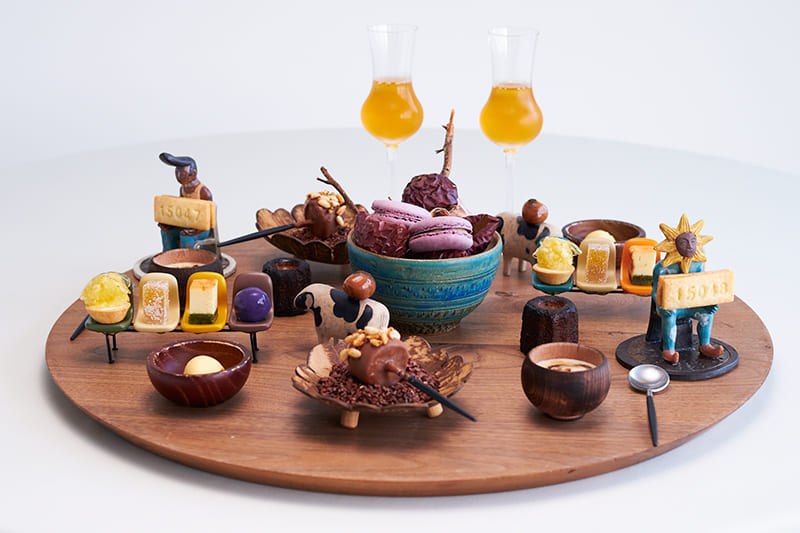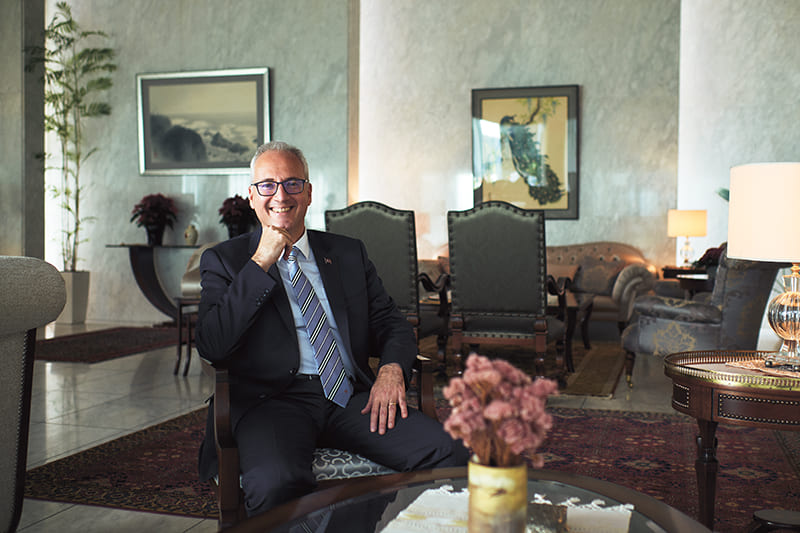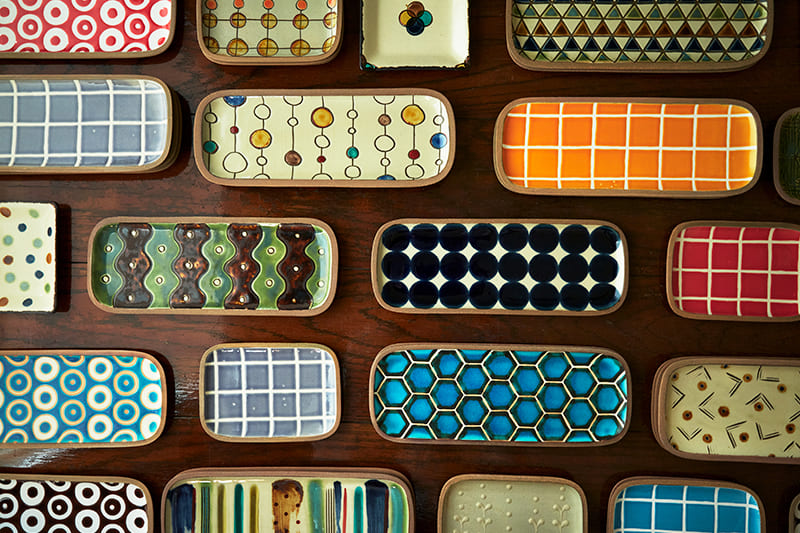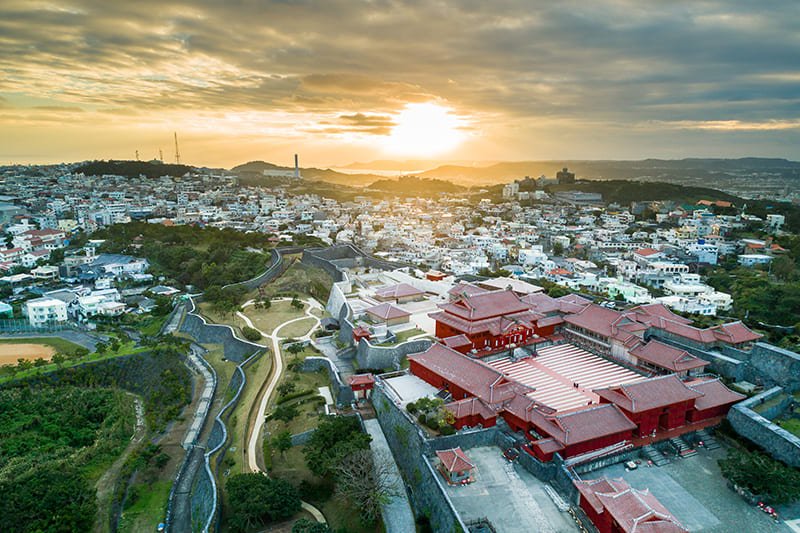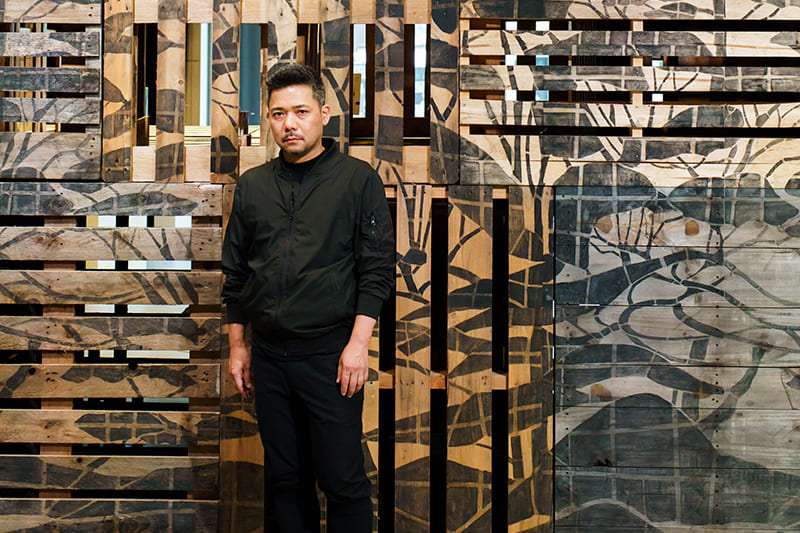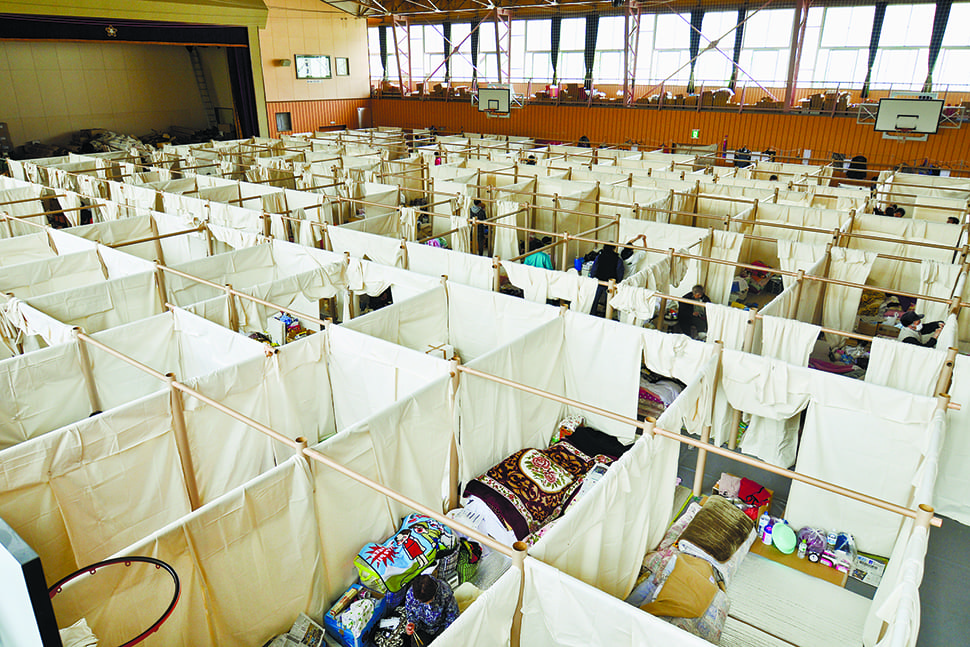November 25, 2022
Architectural masterpiece gives hope in Okinawa
ARCHITECTURE
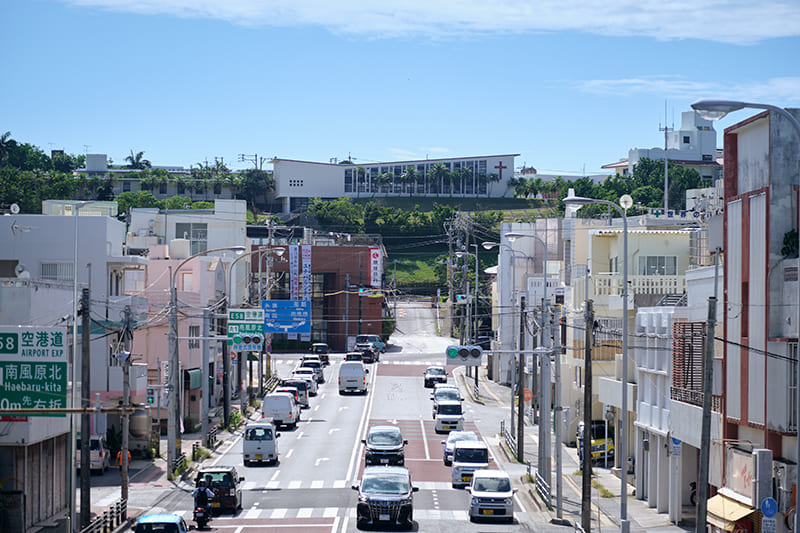
PHOTO: KOUTAROU WASHIZAKI
Do you know about the church that any architecture enthusiast visiting Okinawa is sure to see? It is about a 30-minute drive from the center of Naha, the capital of Okinawa Prefecture, and stands on a small hill overlooking Nakagusuku Bay.
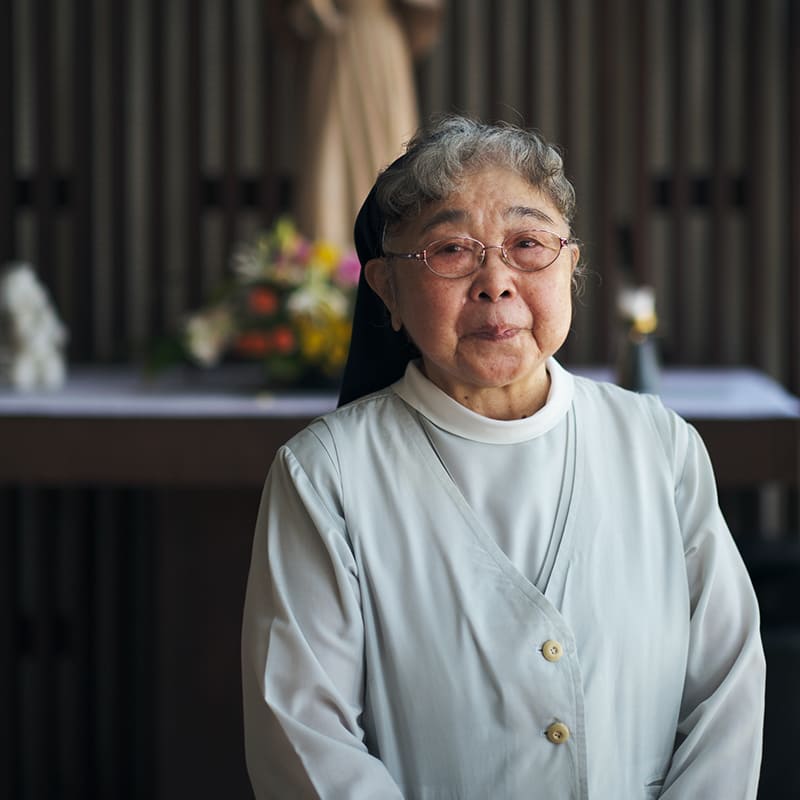
PHOTO: KOUTAROU WASHIZAKI
St. Clara Church, also known as the Yonabaru Catholic Church, was built at the behest of the Rev. Felix Ley, an American who was sent by the Vatican from Guam to Okinawa as a missionary in 1947. The building was completed in 1958. It was designed by Ken Katayama, a Japanese American architect with the construction department of the U.S. forces in Japan, and the Chicago-based architectural firm Skidmore, Owings & Merrill (SOM). Incidentally, SOM, established in 1936, is now one of the world’s leading architectural firms and has had a hand in numerous skyscrapers in Japan, including Tokyo Midtown in Roppongi.
A short walk from the parking lot, the monastery’s entrance is understated, suggesting both modesty and austerity. Passing through it, a corridor leads around a small courtyard and to another doorway. The sight after you open that door is breathtaking. Before you lies a space that is flooded with colored light from broad stained-glass windows. The church was completed just 13 years after the end of World War II, when the devastated Okinawa was far from rebuilt and people’s lives were still filled with anguish. This bright and beautiful space must have helped visitors at the time as they sought to heal their emotional scars.
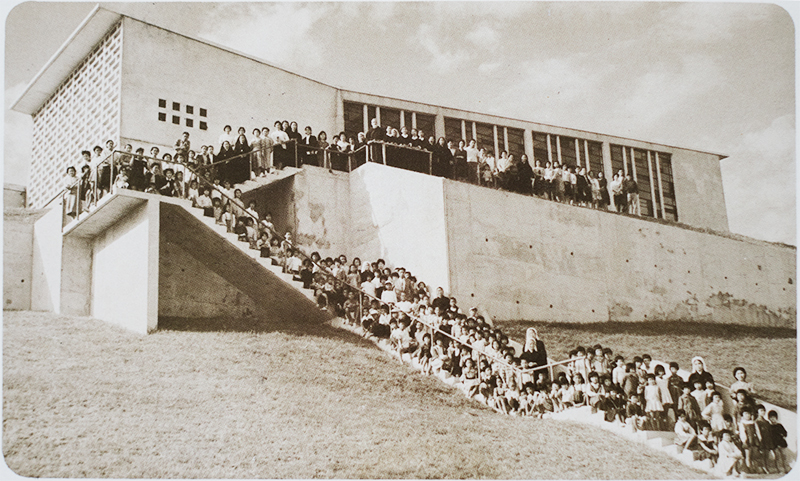
COURTESY: ST. CLARA CHURCH / THE YONABARU CATHOLIC CHURCH
Ryoko Miyagi, a sister who has lived at the monastery since 1959, kindly showed us around. Despite celebrating her 88th birthday this year, she was sprightly beyond her years. She explained that these days, 24 sisters live in the monastery, leading a pious life punctuated with daily services and prayers. Most of the Japanese sisters at the monastery are elderly and from Okinawa, but there are also six sisters in their 20s from Vietnam and one from the Philippines.
The entire north side of the main hall is adorned with stained glass, and the city of Yonabaru can be seen spreading out below. The courtyard and corridor are arranged on the south side, where the sunlight is strongest, and narrow windows are designed to prevent direct sunlight from entering the hall. The one-story, butterfly-shaped building has a roof that fans upward on each side from the middle. Sitting inside, you can see that the ceiling gradually rises toward the altar. At the back there are offices and a vestibule, next to which is a door that leads to the monastery. On the other side of the door is a large green courtyard, and the sisters’ living quarters surround the courtyard in a square shape.
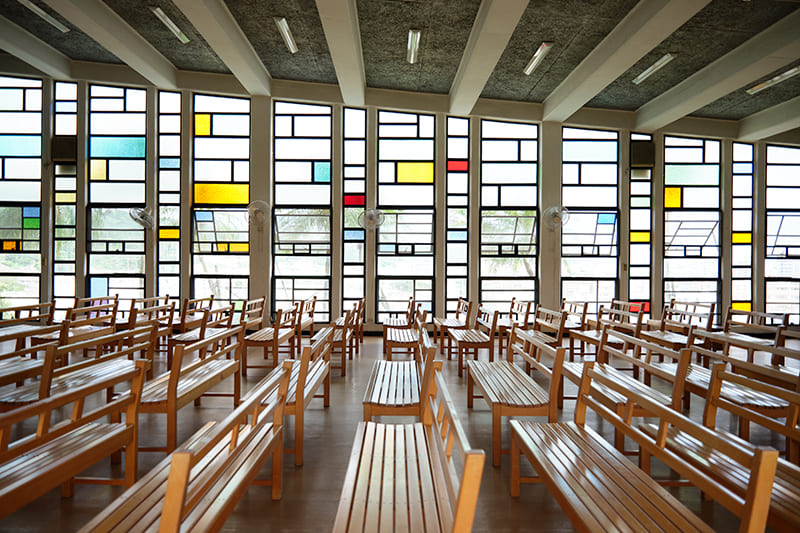
PHOTO: KOUTAROU WASHIZAKI
Sister Miyagi said the building was designed with people in mind. “There are small touches throughout that make it easy to use, like a sickroom next to the altar so that sick sisters can attend Mass while lying on their beds, and the corridors inside the monastery are sloped. There are other things that these days we’d call ‘eco-friendly.’ The large flat roof collects rainwater that is stored in a 10-ton water tank in the basement, which we can use for the toilets and laundry,” she explained. Despite being built 65 years ago, the building was designed from the outset to be kind to both people and the environment. Sister Miyagi said that during typhoons, seawater gets mixed with the rainwater and so the tank has to be emptied out, but at other times the tank water has proved useful during droughts. Sister Miyagi gave a tour of the inside of the monastery, which is normally off limits, and also showed the large scale that measures the amount of rainwater stored in the tank.
When I asked Sister Miyagi what prompted her to join the monastery. Although she hadn’t planned to tell the story, she nevertheless began talking.
“I was born in Davao, Philippines, before the war. My father was originally from Okinawa, but he was not the eldest son, so he moved to the Philippines at the age of 17 and started a hemp rope factory with friends. I was educated in the Philippines until grade two of primary school. At that time, my school teacher was Spanish. However, when the war started and the Japanese army occupied the Philippines, they did a lot of terrible things to the Filipino locals. At the end of the war, as Japan’s defeat became clear, all the Japanese in Davao — both the soldiers and civilians — fled to the mountains, fearing retaliation from the locals. Thinking we would be found near rivers, a group of about three families hid in the mountains and dug the roots of the trees to find water. One day, all the adults went out to search for food and water, and the children were left alone by themselves. At that time, my younger brother and sister were killed by Japanese soldiers.”
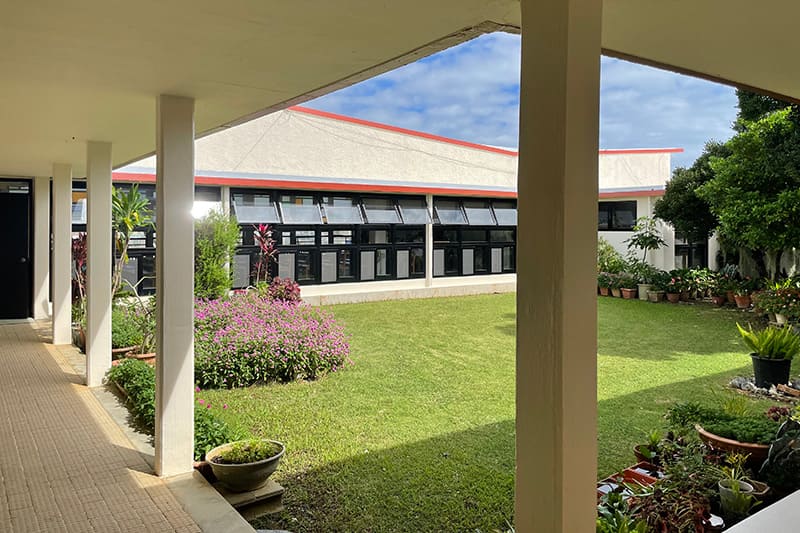
PHOTO: MINAMI NAKAWADA
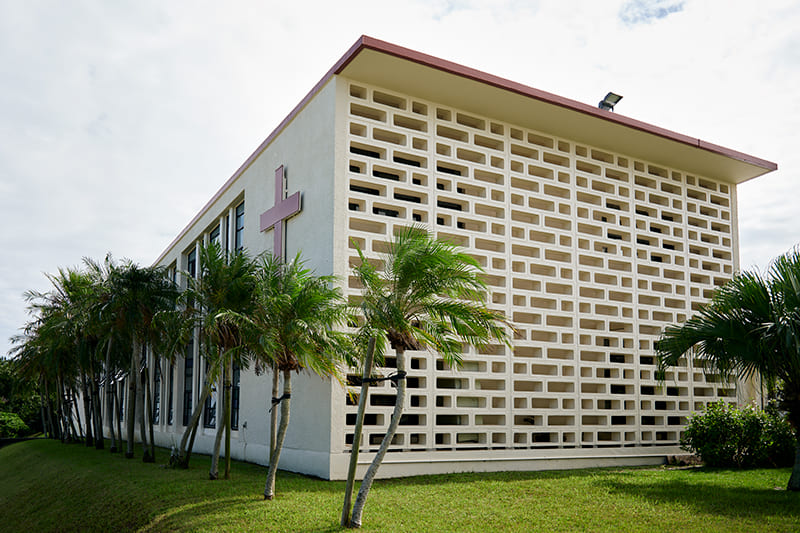
PHOTO: KOUTAROU WASHIZAKI
Sister Miyagi kept on talking calmly. “After that, our family surrendered to the U.S. military. We were transported to a prisoner camp by jeep, but we didn’t know what would happen if the locals found us on the way, so the soldiers hid us. The people whose families and friends had been killed by the Japanese were really angry. They were memories that couldn’t easily be erased. But as a Japanese, I thought I could ask for forgiveness on behalf of the Japanese. So I returned to Okinawa and became a sister.”
There is no easy way of knowing the depth of the wounds and the dark histories that some people have locked away in their hearts, and it is not easy to offer them comfort. But it seems likely that St. Clara Church has indeed brought solace to many people. A trusted confidant, even of silently guarded thoughts, its glittering hall with its stained-glass windows will remain a source of strength for the people of Okinawa.
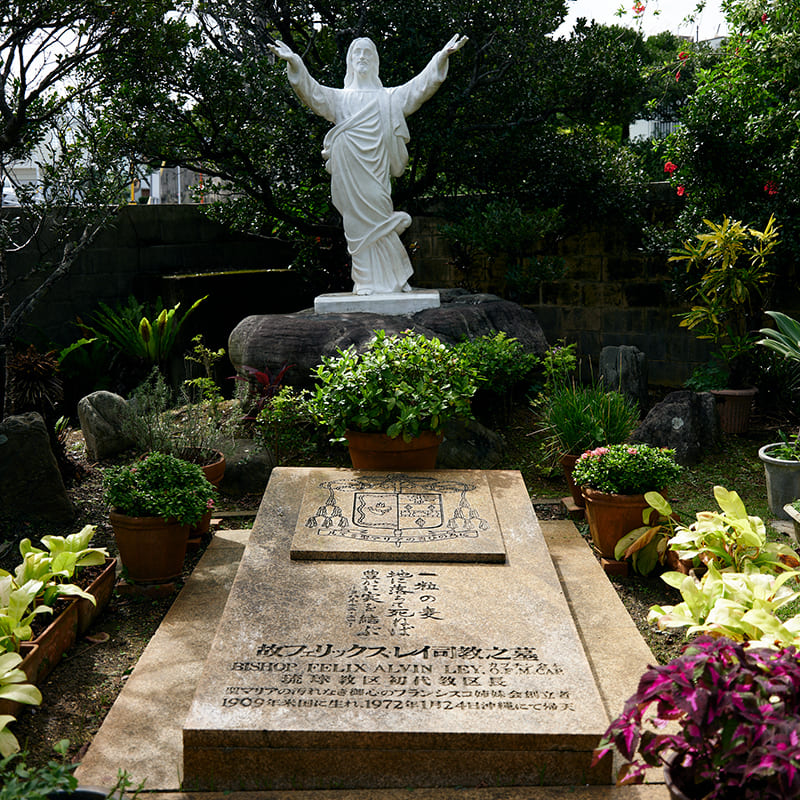
PHOTOS: KOUTAROU WASHIZAKI
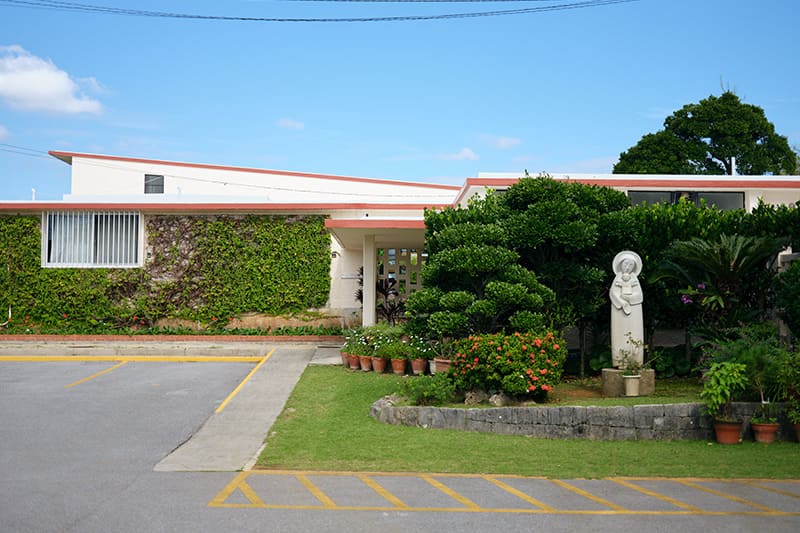
PHOTOS: KOUTAROU WASHIZAKI
沖縄の人々に、慰めと希望を与える名建築。
建築好きの間でぜひ訪れてみたいという教会が沖縄にある。それが<聖クララ教会>(カトリック与那原教会)、フェリックス・レイ神父の主導により建てられたものだ。完成は1958年。設計は在日米軍建設部所属の建築家・片山献と、米国の建築設計事務所SOMだ。会堂は北側一面がステンドグラスになっており眼下には与那原の街が広がる。宮城涼子さんという1959年からこの修道院で暮らすシスターが、この建物はとても人にやさしい工夫が随所にあると教えてくれた。「屋根上の雨水を集め地下にある貯水タンクに貯め、トイレや洗濯など生活用水として使えるようになっています」。約65年も前の建物だが、当時から環境にもやさしいつくりになっていたのだ。
私はシスター宮城になぜ修道院に入ったのか質問をしてみた。彼女はこの話しをするつもりはなかったと言いながらも幼少期フィリピンでの出来事を語ってくれた。人が心に秘めた深い傷や暗い過去は簡単に癒えない。しかし、祈りの空間がこの地に立ち上がったことで、多くの人々に癒しと慰めが与えられたことは事実だろう。
Return to Sustainable Japan Magazine Vol. 18 article list page

